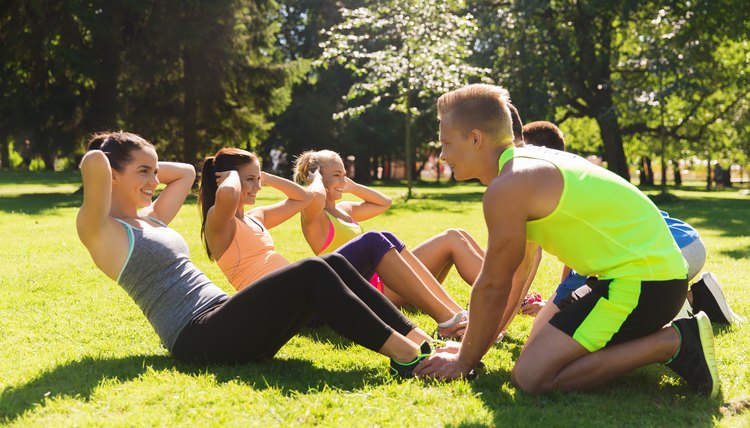What does fact checked mean?
At SportsRec, we strive to deliver objective content that is accurate and up-to-date. Our team periodically reviews articles in order to ensure content quality. The sources cited below consist of evidence from peer-reviewed journals, prominent medical organizations, academic associations, and government data.
- American Council on Exercise: Bird Dog
- American Council on Exercise: Seated Medicine Ball Trunk Rotations
- American Council on Exercise: Stability Ball Knee Tucks
- American Council on Exercise: Bent-Knee Sit-up / Crunches
The information contained on this site is for informational purposes only, and should not be used as a substitute for the advice of a professional health care provider. Please check with the appropriate physician regarding health questions and concerns. Although we strive to deliver accurate and up-to-date information, no guarantee to that effect is made.
Inner Ab Exercises

Your deepest abdominal muscle, the transversus abdominus, stabilizes the spine during body movements. Strengthening and stretching this muscle can help to relieve chronic back pain and give you the core strength necessary to increase your athletic performance. These kinds of exercises are called strength or resistance training. Healthy adults should perform this kind of training on all major muscle groups at least two days per week.
Bird Dog
Add the bird dog to your strength-training routine to target your inner abs. Get into a quadruped position with your palms underneath your shoulders and your legs hip-width apart. To assume the starting position, flex your feet so your toes rest on the floor and align your neck with your spine. Raise your right arm to the front and your left leg behind you at the same time. Lower your limbs to the starting position and repeat, using your left arm and right leg to complete one repetition.
Classic Crunches
Do classic crunches and target your inner abdominal muscles. To get into the starting position, lie on your back with your feet flat on the floor about 12 to 18 inches from your tailbone. Interlace your fingers behind your head. Contract your abdominal muscles and curl your head, neck and shoulder blades off the floor as you look at the ceiling. Return to the starting position to complete one repetition.
Stability Ball Knee Tucks
Perform stability ball knee tucks to tone your inner abs. Position your body so the front of your thighs rests on top of the stability ball and your hands are on the floor underneath your shoulders. To assume the starting position, form a straight line between the top of your head and the tips of your toes. Draw your knees toward your chest to roll the ball down your legs so your shins are on top of it and your hips rise into the air. Return to the starting position to complete one repetition.
Seated Medicine Ball Trunk Rotations
Seated medicine ball trunk rotations target your inner abs. Sit on the floor with your legs extended and hold the medicine ball in front of your chest. Bend your knees slightly, straighten your posture, bring your elbows close to your ribcage and look forward to get into the starting position. Rotate your torso to twist to the right, pause and return to the starting position. Perform the same movement to the left to complete one repetition.
References
- American Council on Exercise: Bird Dog
- American Council on Exercise: Seated Medicine Ball Trunk Rotations
- American Council on Exercise: Stability Ball Knee Tucks
- American Council on Exercise: Bent-Knee Sit-up / Crunches
- Centers for Disease Control and Prevention: How Much Physical Activity Do Adults Need?
Writer Bio
Victoria Weinblatt began writing articles in 2007, contributing to The Huffington Post and other websites. She is a certified yoga instructor, group fitness instructor and massage therapist. Weinblatt received her B.S. in natural resources from Michigan State University and an M.Ed. from Shenandoah University.
